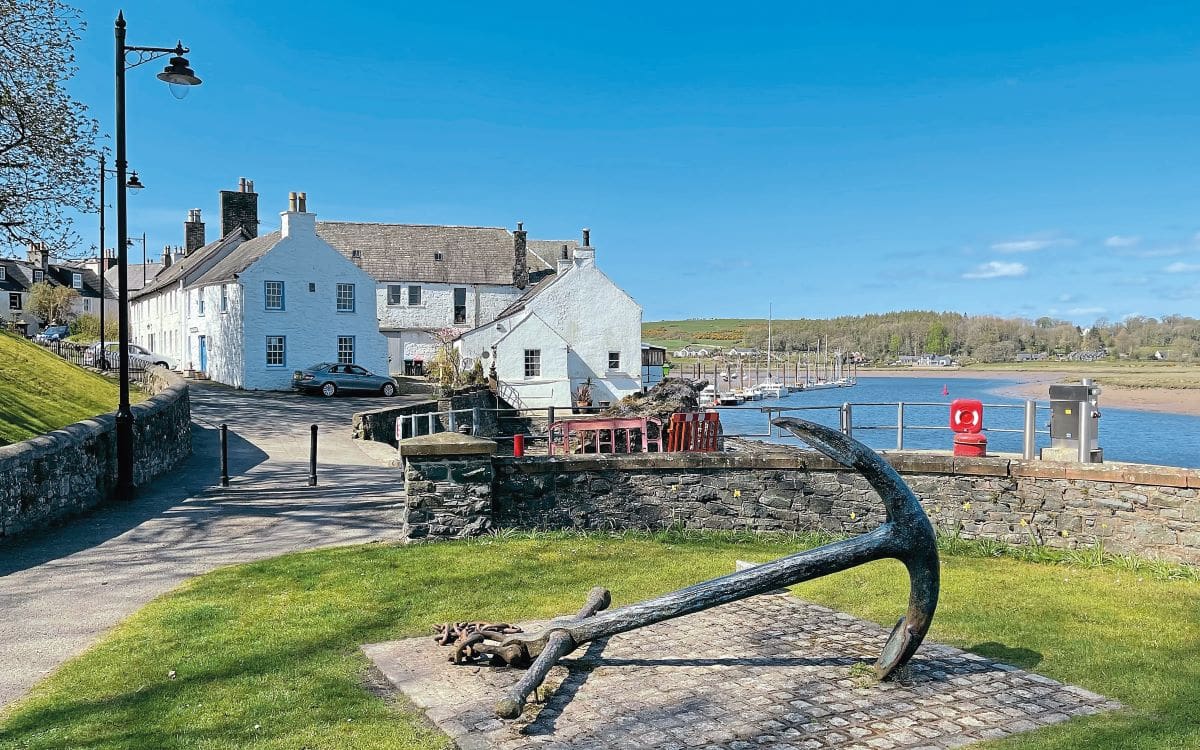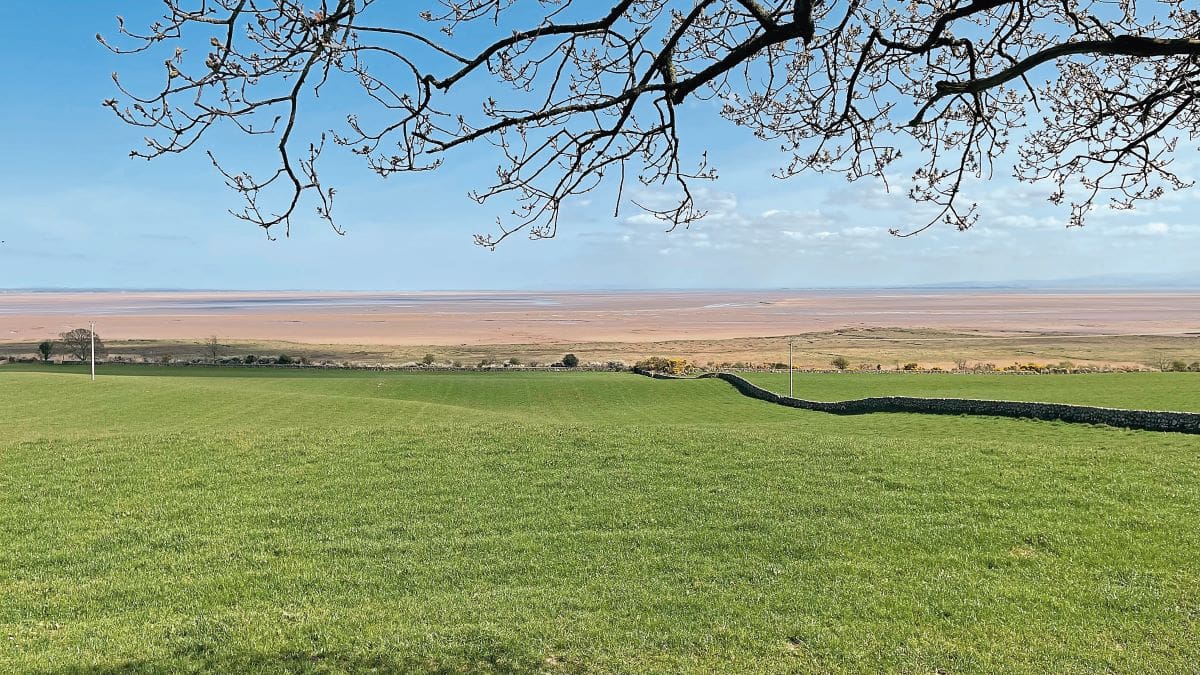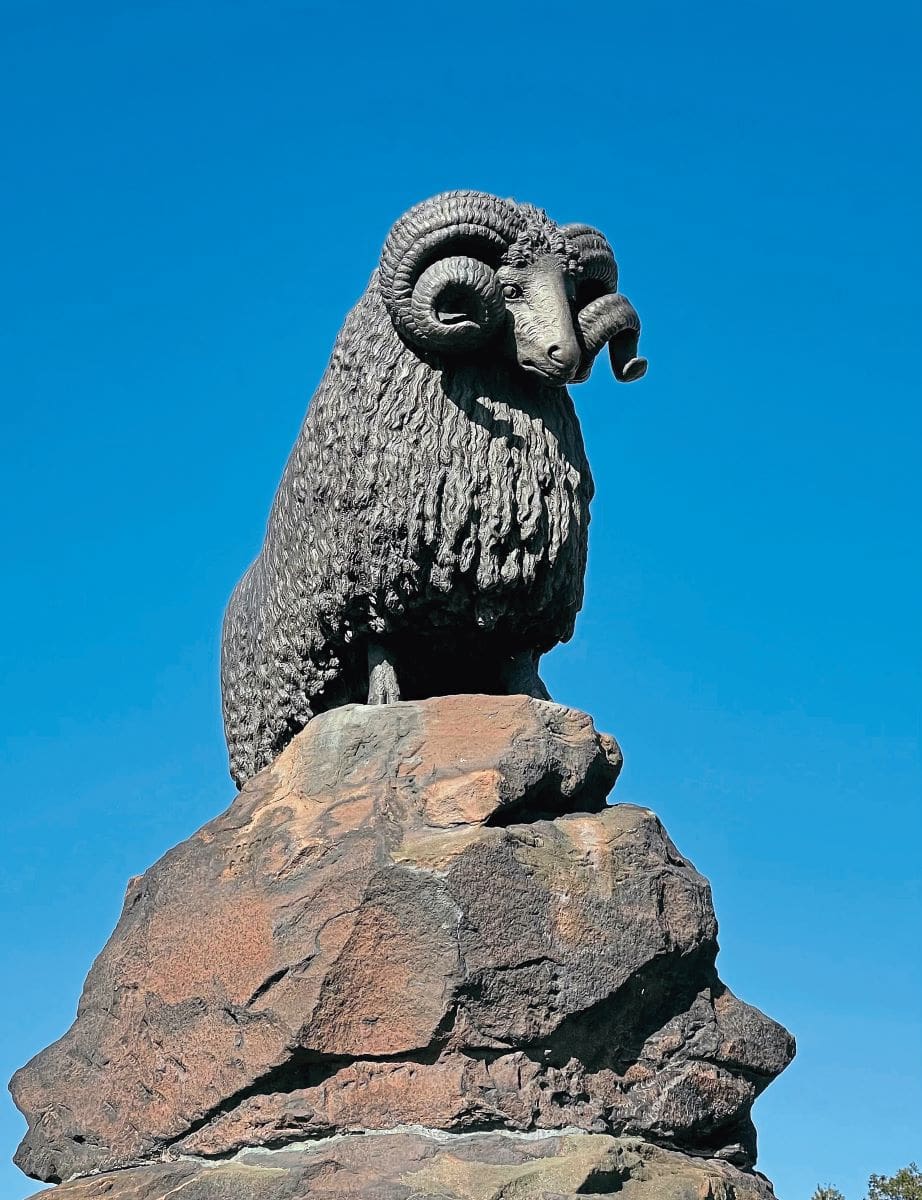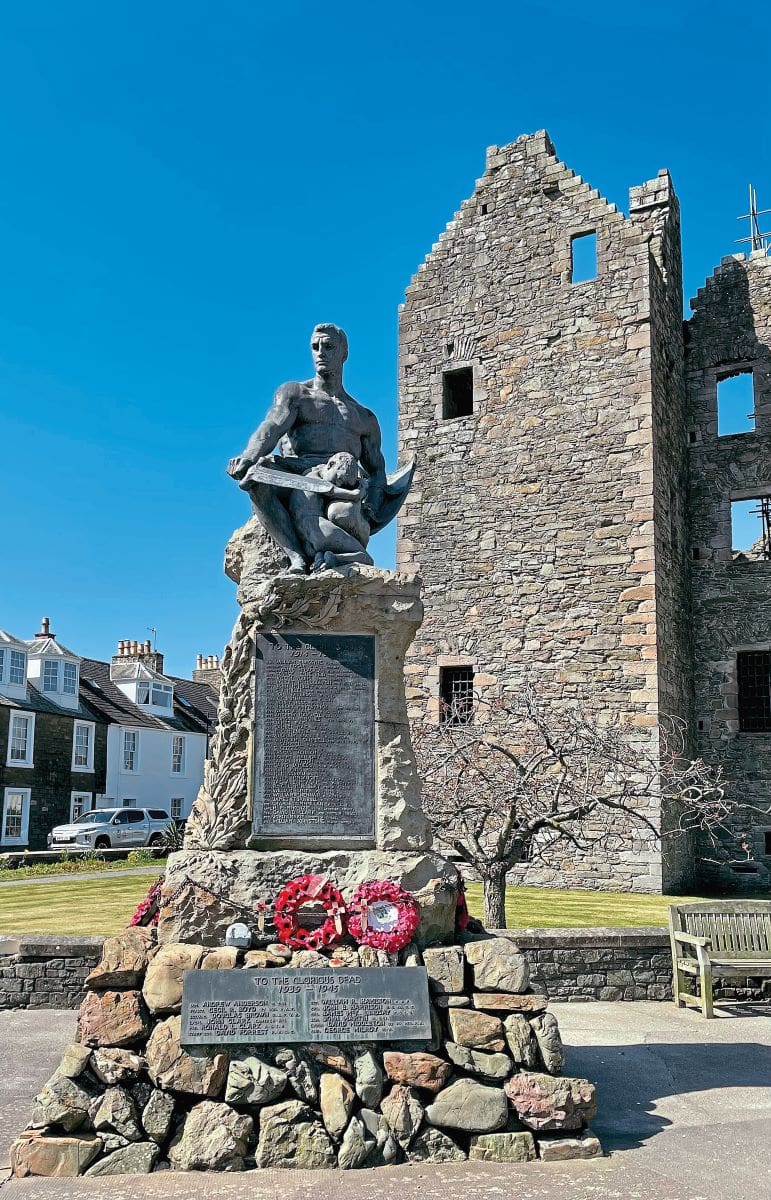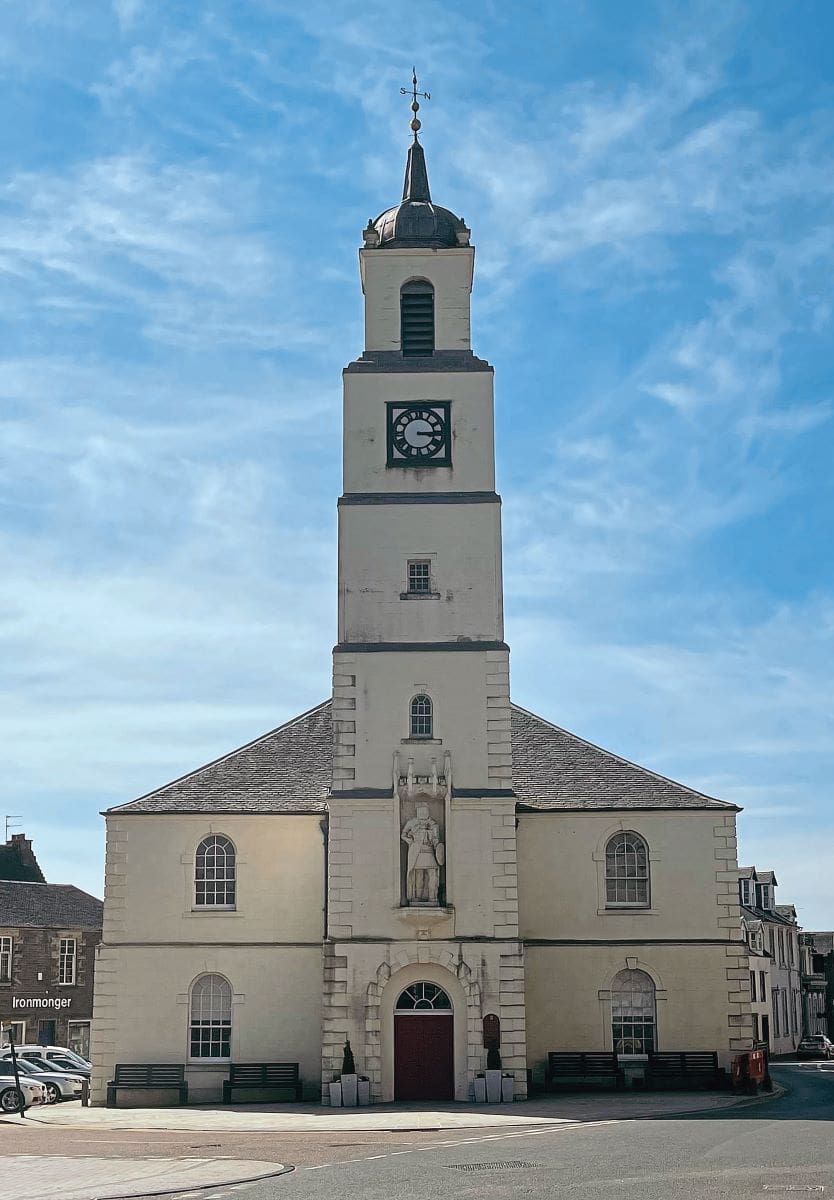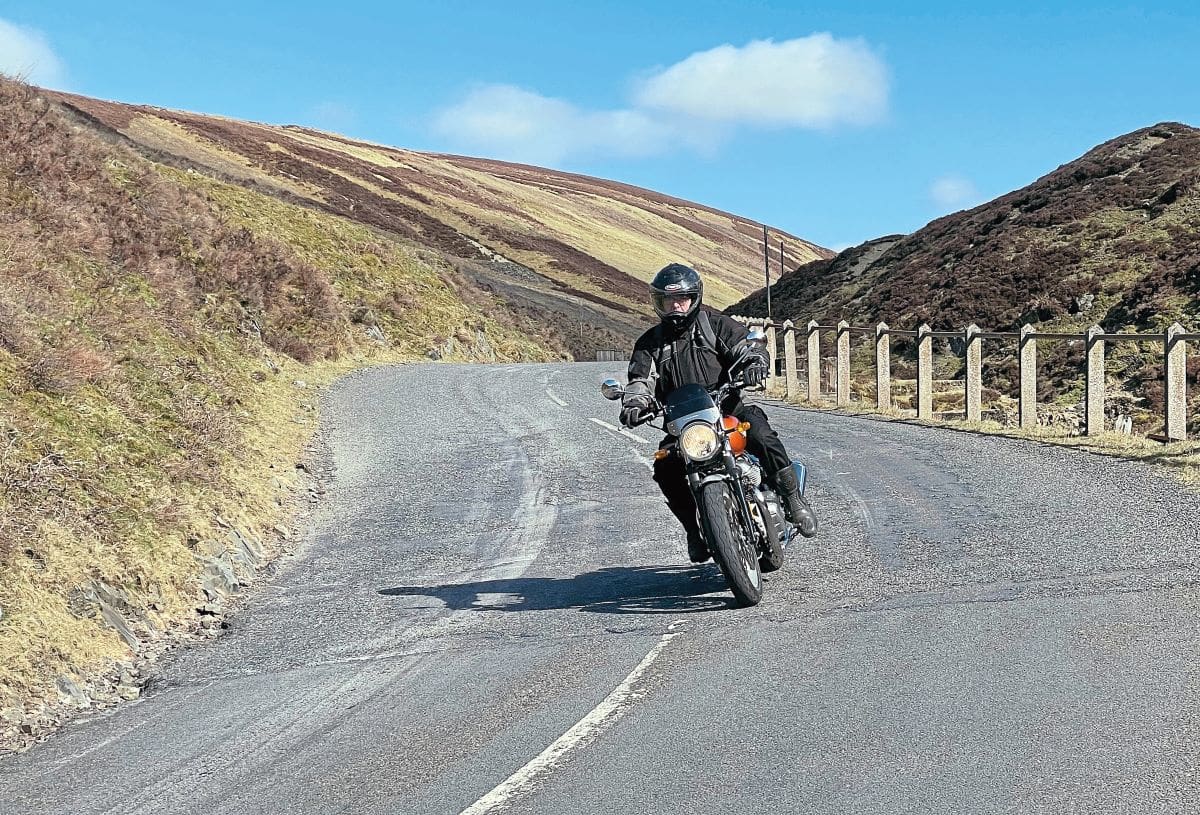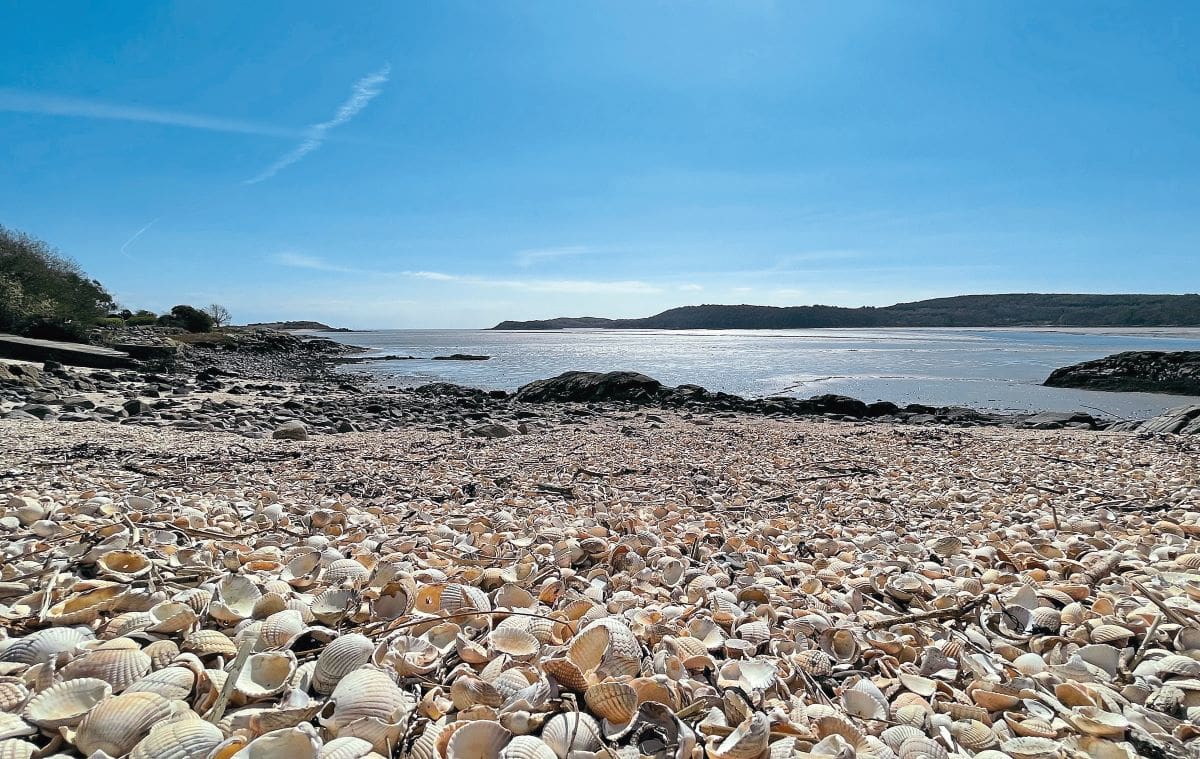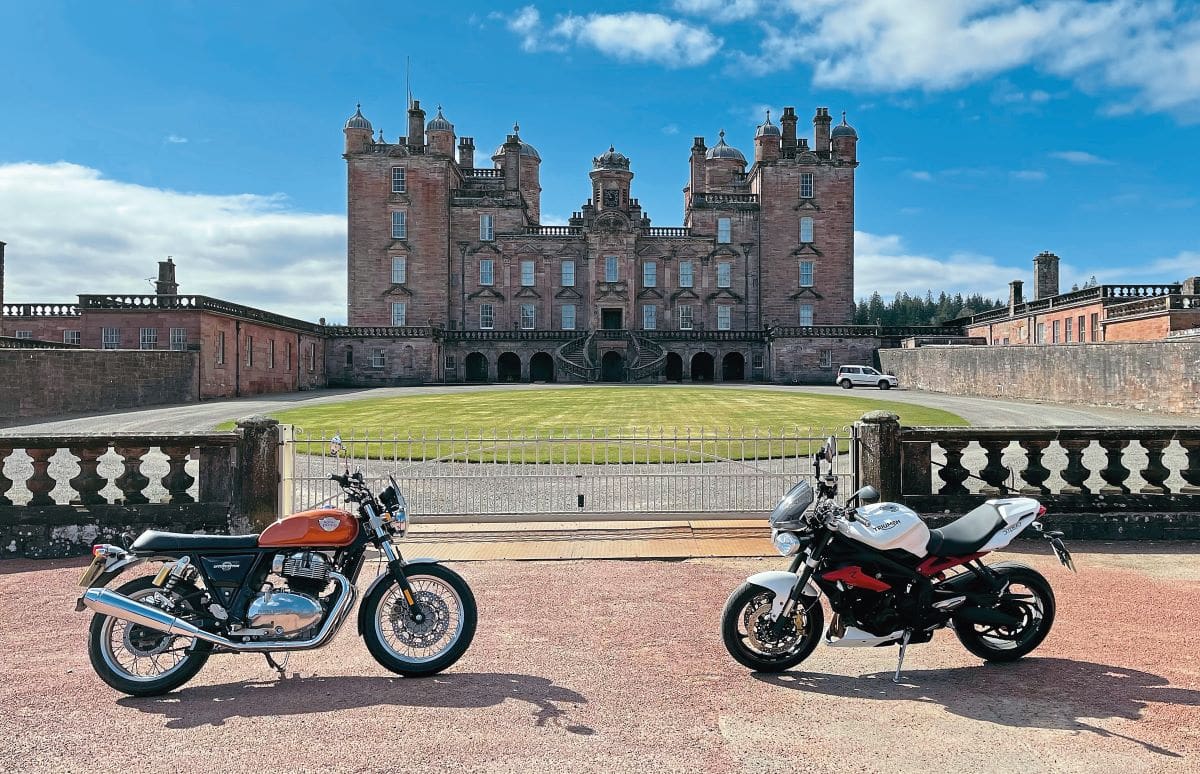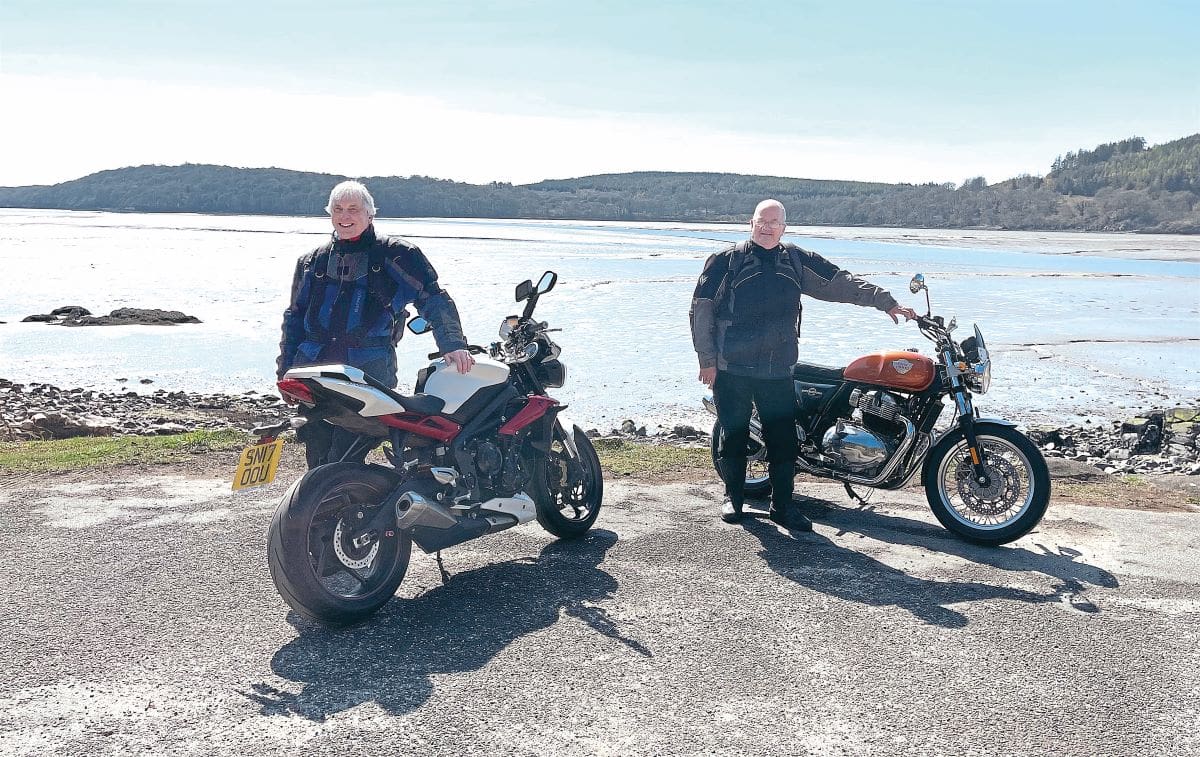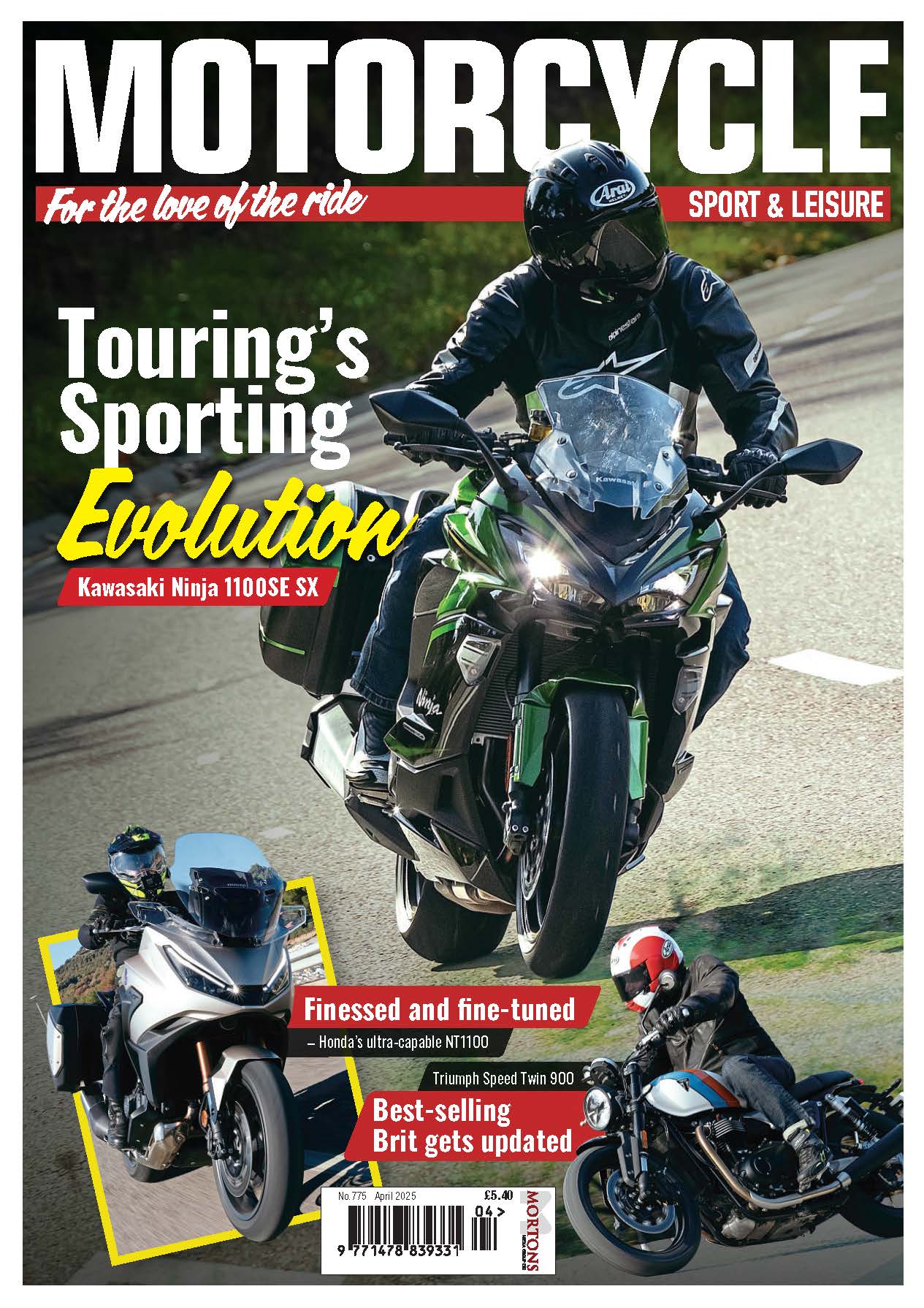200-mile round trip to the Scottish seaside is a good day’s work – artists, old planes and a million cockle shells
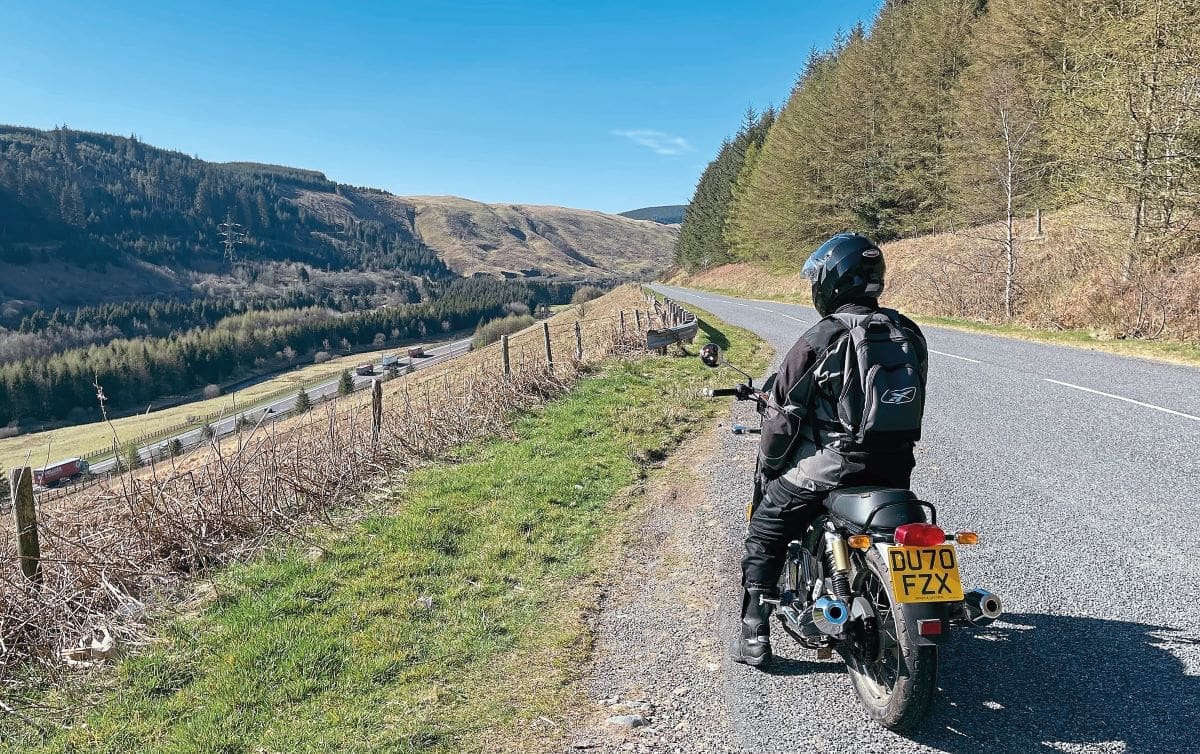
WORDS & PHOTOGRAPHY: Willie Davidson
I’ve got a 675cc Triumph Street Triple R. It’s a hoot to ride and from three miles into the first test ride, I’ve loved it. However, one of the things I decided during Covid lockdown was that I wanted to travel more and take more road trips. So I’ve traded in the Street Triple for a new Tiger 900GT. But with my new bike still in a crate halfway across the South China Sea, there was time for a final long ride on the 675cc Triple. Meanwhile, my mate Phil had just bought a new Royal Enfield Interceptor and took little persuasion to make a road trip to the seaside.
Enjoy everything MSL by reading the monthly magazine, Subscribe here.
We both live in Lanark in the Scottish central belt and a wee round trip to Kirkcudbright in Dumfries and Galloway is just under 200 miles. So this ride starts in Lanark which, in many ways, is a good place to begin. It’s a Royal and Ancient Burgh and in the 13th century William Wallace came visiting to kill the English Sheriff, thus getting a scene 800 years later in the movie Braveheart. More recently (18th century) a cotton mill and model village were created at New Lanark, now a UNESCO World Heritage Centre; if you want to stay, there’s a reasonably priced hotel and youth hostel.
We weren’t thinking of history as we set off on our seaside trip. It was cool but dry with bright spring sunshine as Phil and I headed down the A73, a well-surfaced road across moorland with gentle curves and pleasant views. About 35 miles south of Lanark is the town of Leadhills which, appropriately, has a lead mining museum. Six miles further on is Wanlockhead, at 1532ft Scotland’s highest village. After this the A797 becomes narrow, undulating and twisty as it winds down between the hills. It’s also poorly surfaced, covered in gravel, with unfenced sheep and solid concrete posts on both sides. Phil and I liked it so much we rode back to Wanlockhead from the bottom of the valley just so we could ride it again! Oh, it also has awesomely distracting views.
At Mennock we turned left and joined the A76, with a side trip to Drumlanrig Castle before turning on to the A702, then the A762. This road stays gloriously twisty and stunningly beautiful all the way to Kirkcudbright, but regular and deep potholes mean moderating your speed and keeping your focus.
Nae Lugs
Kirkcudbright is a small fishing town at the mouth of the River Dee which became the haunt of artists in the last century when a community of painters moved in. It was also a location in the cult 1973 horror film The Wicker Man, and a gorgeous wee place where Phil and I stopped for coffee and bacon rolls.
Not long after leaving Kirkcudbright on the A711 the roads become more majestically sweeping, but still have the odd pothole to keep you on the ball. At Dalbeattie we switched on to the A710 but turned off briefly to see Rough Beach at Kippford. At low tide what appears to be golden sands are, on closer inspection, actually millions of cockleshells.
Dumfries is the only larger town in these parts and we stopped to see the Aviation Museum, which has a fascinating collection of aircraft, but today it was closed. We were, however, able to fuel up in Dumfries and Phil was delighted that the Street Triple’s tank took £15 to fill where his Interceptor only needed £11. He blamed my extra 25cc.
From Dumfries it’s a 20-mile trip north to the pretty little town of Moffat. When I was growing up in the Borders in the 70s I used to ride my two-stroke, air-cooled, Yamaha RD250 to Moffat for an ice cream. If you’d told me then that the town would become a mecca for touring motorcyclists, I would have laughed myself incontinent. Yet, life is a funny thing and 45 years later Moffat has a growing reputation among touring bikers.
Our little jaunt to the seaside had a circular route, so you could start/end this trip in the town. Either way, here’s an interesting story about Moffat. Due to its importance in the wool trade, Moffat commissioned a statue of a ram for the town centre. According to legend when this large and imposing statue was unveiled to the people of the town a local farmer exclaimed: “It hasn’ae ony lugs.” Roughly translated this means, ‘It hasn’t any ears.’ Sculptor William Brodie was so devastated by his mistake that he retired to his room (which overlooked the statue) and hung himself! Allegedly you can still see Brodie’s ghost walking the town looking for his ram’s lost lugs.
For the last leg of the journey, there’s a choice. Hammer up the M74 until junction 12 at Lesmahagow and be back in Lanark in under 35 minutes. Or take the A701, B7076, A702 and B7078 to Lesmahagow and be back in Lanark in 40. Why should I take an extra five minutes to get back, I hear you ask? Well, this route was the old road before the M74 was built and it has a certain charm.
As Phil and I cruised up it I realised it was similar to somewhere I’d been before. While the North Coast 500 is often described as Scotland’s Route 66, I think this – the old A74 – is actually closer to the reality. I was lucky enough to ride Route 66 a couple of years ago and the faded grandeur, lack of traffic and the fact that this one runs parallel to a newer motorway reminded me of the Mother Road.
Anyway, the day was a splendid send off for my Street Triple and an excellent introduction for Phil’s Interceptor. The route is best ridden at an easy touring pace and after departing at 9am we were back in Lanark just after five. It proved to be the most enjoyable 9-5 I’ve had in years!
Fancy doing the ride yourself? Check out the map below and download the route here: www.dropbox.com/s/mdqxlenl329qicf/DayRide732.gpx?dl=0


